Growing Bananas at Home might sound like a tropical dream reserved for sun-drenched climates, but I’m here to tell you it’s more achievable than you think! Imagine plucking a perfectly ripe, homegrown banana right from your own backyard – the taste is simply unparalleled. For centuries, bananas have been a staple food and a symbol of abundance in many cultures, tracing back to Southeast Asia. Now, you can bring a piece of that history to your own home.
But why should you bother with the effort? Well, store-bought bananas, while convenient, often lack the intense flavor and nutritional value of freshly grown ones. Plus, growing bananas at home is a fantastic way to connect with nature, learn about plant life cycles, and even impress your friends with your green thumb! Many people are intimidated by the thought of cultivating tropical fruits, but with the right knowledge and a few clever DIY tricks, you can create a thriving banana haven, even in less-than-ideal climates. I’m going to share some simple, effective hacks that will have you harvesting your own delicious bananas in no time. Get ready to transform your garden into a mini-tropical paradise!
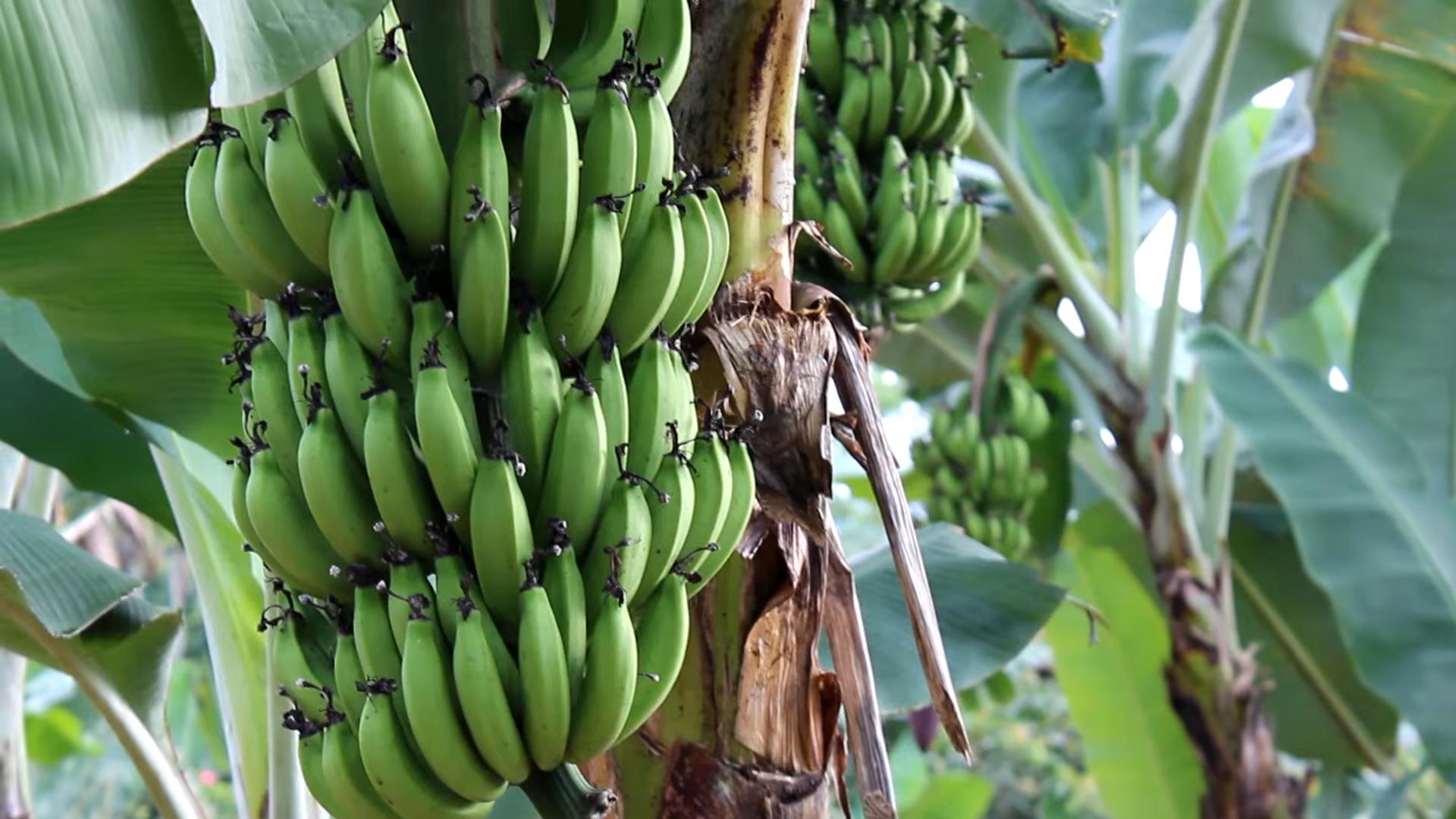
Growing Bananas at Home: A DIY Guide to Tropical Delights
Hey there, fellow plant enthusiasts! Ever dreamt of harvesting your own bananas right in your backyard? It might sound like a tropical fantasy, but trust me, with a little know-how and some dedication, you can absolutely grow bananas at home. I’ve done it, and I’m here to share my secrets! This guide will walk you through everything you need to know, from choosing the right variety to dealing with pesky pests. Let’s get started!
Choosing the Right Banana Variety
The first step to banana-growing success is selecting a variety that’s suited to your climate and space. Not all bananas are created equal! Some are giants that need acres of land, while others are compact and perfect for containers.
* Consider your climate: Are you in a warm, tropical zone, or do you experience colder winters? Dwarf varieties are generally more cold-hardy.
* Think about space: Do you have a large garden or just a patio? Dwarf bananas thrive in pots.
* Popular dwarf varieties: ‘Dwarf Cavendish’, ‘Rajapuri’, and ‘Truly Tiny’ are excellent choices for home growers.
* Popular non-dwarf varieties: ‘Williams Hybrid’, ‘Goldfinger’, and ‘Ice Cream’ are great if you have the space.
Preparing the Planting Site
Bananas are hungry plants, so preparing the soil properly is crucial. They also need plenty of sunlight.
* Sunlight: Choose a location that receives at least 6-8 hours of direct sunlight per day.
* Soil: Bananas prefer well-draining, slightly acidic soil (pH 6.0-6.5).
* Amendment: Amend the soil with plenty of organic matter, such as compost, well-rotted manure, or peat moss. This will improve drainage, fertility, and water retention.
* Drainage: Ensure the planting site has good drainage. Bananas don’t like soggy feet! If your soil is heavy clay, consider planting in a raised bed or container.
Planting Your Banana Plant
Now for the exciting part – getting your banana plant in the ground!
1. Dig the hole: Dig a hole that’s twice as wide and as deep as the root ball of your banana plant.
2. Amend the soil: Mix the soil you removed from the hole with compost or other organic matter.
3. Position the plant: Gently remove the banana plant from its container and loosen any circling roots. Place the plant in the hole, ensuring the top of the root ball is level with the surrounding soil.
4. Backfill the hole: Backfill the hole with the amended soil, gently tamping it down to remove air pockets.
5. Water thoroughly: Water the newly planted banana plant thoroughly to help settle the soil.
6. Mulch: Apply a layer of mulch around the base of the plant to help retain moisture and suppress weeds. I like to use straw or wood chips.
Caring for Your Banana Plant
Consistent care is key to a healthy and productive banana plant.
* Watering: Bananas need plenty of water, especially during the growing season. Water deeply whenever the top inch of soil feels dry. In hot weather, you may need to water daily. Reduce watering during the winter months.
* Fertilizing: Bananas are heavy feeders and require regular fertilization. Use a balanced fertilizer (e.g., 10-10-10) every 2-3 months during the growing season. You can also supplement with organic fertilizers like compost tea or fish emulsion.
* Pruning: Remove any dead or damaged leaves regularly. After the banana plant fruits, the main stem will die back. Cut it down to the ground to allow new suckers (baby banana plants) to emerge.
* Support: As the banana plant grows taller and the fruit bunch develops, it may need support to prevent it from toppling over. Use stakes or a trellis to provide support.
Dealing with Pests and Diseases
Like any plant, bananas can be susceptible to pests and diseases. Here’s what to watch out for:
* Aphids: These tiny insects can suck the sap from banana leaves, causing them to curl and yellow. Control aphids with insecticidal soap or neem oil.
* Spider mites: These tiny pests create webs on banana leaves and can cause them to become stippled and discolored. Control spider mites with insecticidal soap or horticultural oil.
* Banana weevils: These pests can bore into the base of the banana plant, causing it to weaken and die. Prevent banana weevils by keeping the area around the plant clean and free of debris.
* Fusarium wilt (Panama disease): This fungal disease can cause the banana plant to wilt and die. Unfortunately, there is no cure for Fusarium wilt. Prevent it by planting disease-resistant varieties and practicing good sanitation.
* Black Sigatoka: This fungal disease causes leaf spots and can reduce fruit yield. Control Black Sigatoka with fungicides.
Overwintering Banana Plants
If you live in a climate with cold winters, you’ll need to protect your banana plant from frost.
* Container-grown bananas: The easiest way to overwinter container-grown bananas is to bring them indoors to a bright, cool location. Water sparingly during the winter months.
* In-ground bananas: For in-ground bananas, you can protect them by wrapping the trunk with burlap or blankets. You can also build a frame around the plant and fill it with straw or leaves. In very cold climates, you may need to cut the plant back to the ground and mulch heavily. The plant will regrow from the roots in the spring.
Harvesting Your Bananas
The moment you’ve been waiting for! Harvesting your own homegrown bananas is incredibly rewarding.
* Timing: Bananas are typically ready to harvest about 90-150 days after the flower emerges.
* Signs of ripeness: The bananas will become plump and rounded, and the color will change from green to yellow.
* Harvesting: Cut the entire bunch of bananas from the plant using a sharp knife.
* Ripening: Hang the bunch of bananas in a cool, dry place to ripen. You can also speed up the ripening process by placing the bananas in a paper bag with an apple or banana.
Propagating Banana Plants
Once you have a thriving banana plant, you can easily propagate new plants from the suckers that emerge from the base of the plant.
1. Wait for the sucker to mature: Allow the sucker to grow to about 1-2 feet tall.
2. Dig up the sucker: Carefully dig around the base of the sucker, severing it from the main plant with a sharp knife or shovel.
3. Plant the sucker: Plant the sucker in a pot or directly in the ground, following the same planting instructions as for a mature banana plant.
4. Water and care: Water the newly planted sucker regularly and fertilize it as needed.
Growing Bananas in Containers: A Detailed Guide
If you’re short on space or live in a colder climate, growing bananas in containers is a fantastic option. Here’s a more detailed look:
* Choosing the right container: Select a large container, at least 20 gallons in size. The bigger, the better! Make sure the container has drainage holes.
* Potting mix: Use a well-draining potting mix that’s rich in organic matter. I like to mix equal parts potting soil, compost, and perlite.
* Planting: Follow the same planting instructions as for in-ground bananas.
* Watering: Container-grown bananas dry out more quickly than in-ground bananas, so water them more frequently. Check the soil moisture regularly and water whenever the top inch feels dry.
* Fertilizing: Container-grown bananas need regular fertilization. Use a balanced fertilizer every 2-3 weeks during the growing season.
* Sunlight: Place the container in a location that receives at least 6-8 hours of direct sunlight per day.
* Moving the container: If you live in a cold climate, you’ll need to move the container indoors during the winter months. Choose a bright, cool location.
* Repotting: As the banana plant grows, it may need to be repotted into a larger container. Repot every 1-2 years, or when the roots start to circle the bottom of the container.
Troubleshooting Common Banana Growing Problems
Even with the best care, you might encounter some challenges along the way. Here are some common problems and how to address them:
* Yellowing leaves: This can be caused by a variety of factors, including overwatering, underwatering, nutrient deficiencies, or pests. Check the soil moisture, fertilize the plant, and inspect for pests.
* Brown leaf tips
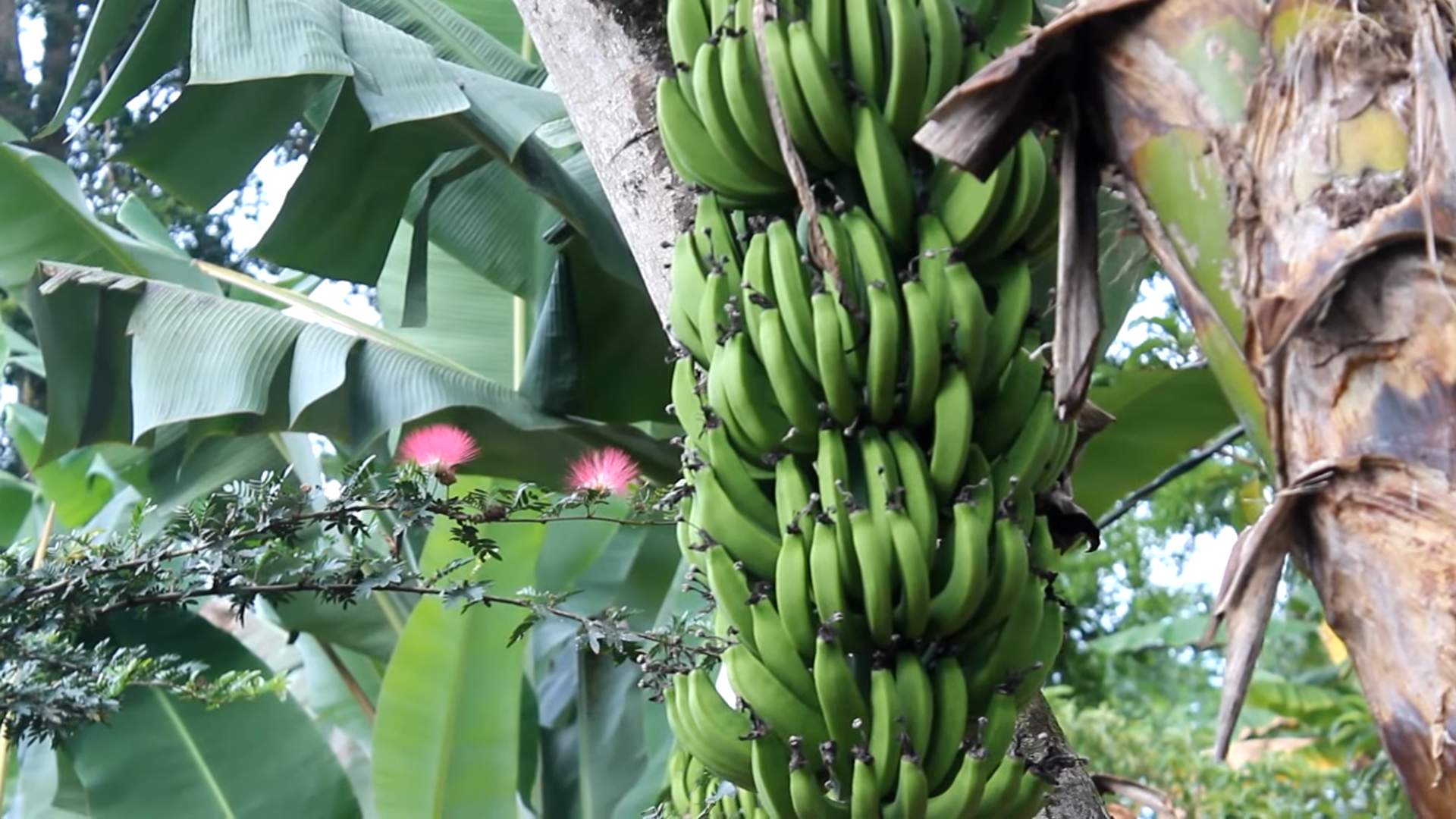
Conclusion
So, there you have it! Growing bananas at home might seem like a tropical dream reserved for warmer climates, but with a little know-how and dedication, it’s an achievable and incredibly rewarding experience, even if you’re not living in the tropics. This DIY trick, focusing on container gardening and strategic environmental control, opens up the possibility of enjoying homegrown bananas regardless of your geographical location.
Why is this a must-try? Beyond the sheer novelty of harvesting your own bananas, this method offers several compelling advantages. Firstly, you have complete control over the growing environment, minimizing the risk of pests and diseases that can plague outdoor banana plantations. Secondly, container gardening allows you to move your banana plant indoors during colder months, effectively extending the growing season and protecting it from frost damage. Thirdly, the taste of a homegrown banana, ripened naturally on the plant, is simply unparalleled – a sweetness and flavor intensity you won’t find in store-bought varieties.
But don’t stop there! Experimentation is key to mastering the art of growing bananas at home. Consider trying different banana varieties suited for container gardening, such as Dwarf Cavendish, Rajapuri, or Goldfinger. Each variety offers a unique flavor profile and growth habit. You can also explore different soil mixes to find the perfect balance of drainage and nutrient retention for your banana plant. Adding organic matter like compost or well-rotted manure can significantly boost growth and fruit production.
Furthermore, think about incorporating companion plants into your banana container. Herbs like basil or mint can help deter pests and attract beneficial insects. Flowers like marigolds can add a splash of color and further enhance pest control.
We wholeheartedly encourage you to embark on this banana-growing adventure. It’s a fantastic way to connect with nature, learn about plant life cycles, and ultimately, savor the delicious fruits of your labor. Don’t be afraid to get your hands dirty, experiment with different techniques, and most importantly, have fun!
Once you’ve successfully harvested your first bunch of homegrown bananas, we’d love to hear about your experience. Share your tips, tricks, and photos with us in the comments section below. Let’s build a community of banana-growing enthusiasts and inspire others to try this amazing DIY trick. Your insights could be invaluable to someone just starting out. Happy growing!
Frequently Asked Questions (FAQ)
What is the best banana variety to grow in a container?
The best banana varieties for container gardening are dwarf varieties, as they are naturally smaller and more manageable. Dwarf Cavendish is a popular choice due to its relatively small size and good fruit production. Other excellent options include Rajapuri, known for its cold hardiness, and Goldfinger, which produces bananas with a slightly tangy flavor. When selecting a variety, consider your local climate and the amount of space you have available. Research the specific needs of each variety to ensure you can provide the optimal growing conditions.
How much sunlight does a container-grown banana plant need?
Banana plants are sun-loving creatures and require at least 6-8 hours of direct sunlight per day to thrive and produce fruit. If you’re growing your banana plant indoors, place it near a south-facing window where it can receive ample sunlight. You may also need to supplement with artificial grow lights, especially during the winter months or in regions with limited sunlight. Rotate the plant regularly to ensure all sides receive even exposure to light. Insufficient sunlight can lead to stunted growth, reduced fruit production, and pale leaves.
What type of soil is best for growing bananas in containers?
Banana plants prefer well-draining, fertile soil that is rich in organic matter. A good potting mix for container-grown bananas should consist of a combination of peat moss, perlite, and compost. The peat moss helps retain moisture, while the perlite improves drainage and aeration. Compost provides essential nutrients for healthy growth. Avoid using heavy clay soils, as they can become waterlogged and suffocate the roots. You can also amend your potting mix with slow-release fertilizer to provide a steady supply of nutrients throughout the growing season.
How often should I water my banana plant?
Watering frequency depends on several factors, including the size of the container, the climate, and the growth stage of the plant. Generally, banana plants need consistent moisture but should not be allowed to sit in standing water. Water thoroughly when the top inch of soil feels dry to the touch. During hot, dry weather, you may need to water daily. Reduce watering during the winter months when the plant is not actively growing. Ensure that your container has adequate drainage holes to prevent waterlogging, which can lead to root rot.
How do I fertilize my banana plant?
Banana plants are heavy feeders and require regular fertilization to support their rapid growth and fruit production. Use a balanced fertilizer with a ratio of 10-10-10 or 15-15-15, or a fertilizer specifically formulated for fruit trees. Fertilize every 2-3 weeks during the growing season (spring and summer). Reduce fertilization during the winter months. You can also supplement with organic fertilizers like compost tea or fish emulsion. Follow the instructions on the fertilizer label carefully to avoid over-fertilizing, which can damage the plant.
How do I protect my banana plant from frost?
Banana plants are sensitive to frost and can be damaged or killed by freezing temperatures. If you live in an area with cold winters, you will need to protect your banana plant from frost. The easiest way to do this is to move the container indoors to a warm, sunny location. If you cannot move the plant indoors, you can wrap the trunk and leaves with burlap or blankets to provide insulation. You can also build a temporary shelter around the plant using plastic sheeting or tarps. Ensure that the shelter is well-ventilated to prevent moisture buildup.
How long does it take for a banana plant to produce fruit?
The time it takes for a banana plant to produce fruit depends on several factors, including the variety, the growing conditions, and the age of the plant. Generally, it takes about 9-15 months for a banana plant to flower and produce fruit. After flowering, it takes another 3-6 months for the bananas to ripen. Provide your banana plant with optimal growing conditions, including plenty of sunlight, water, and fertilizer, to encourage faster fruit production.
How do I harvest bananas from my plant?
Bananas are ready to harvest when they are plump and rounded, and the skin has turned from green to yellow. You can harvest the entire bunch at once by cutting the stalk with a sharp knife or pruning shears. Leave a few inches of the stalk attached to the bunch. Hang the bunch in a cool, dry place to ripen. You can also harvest individual bananas as they ripen. Simply cut the banana from the bunch with a sharp knife.
My banana plant is not flowering. What could be the reason?
There are several reasons why your banana plant might not be flowering. The most common reasons include insufficient sunlight, lack of nutrients, and improper watering. Ensure that your banana plant is receiving at least 6-8 hours of direct sunlight per day. Fertilize regularly with a balanced fertilizer. Water thoroughly when the top inch of soil feels dry to the touch. Also, make sure your plant is mature enough to flower. Some varieties take longer to mature than others. If you have addressed all of these factors and your banana plant still isn’t flowering, it may be time to repot it into a larger container.
Can I grow bananas from seed?
While it is possible to grow bananas from seed, it is a very slow and challenging process. Banana seeds have a hard outer coating that needs to be scarified before they will germinate. Even with scarification, germination rates are often low. Furthermore, banana plants grown from seed may not produce fruit that is true to type, meaning the bananas may not taste the same as the parent plant. For these reasons, it is generally recommended to propagate banana plants from pups (suckers) or rhizomes.


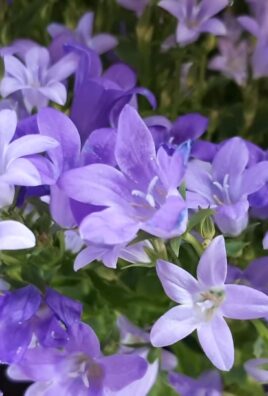
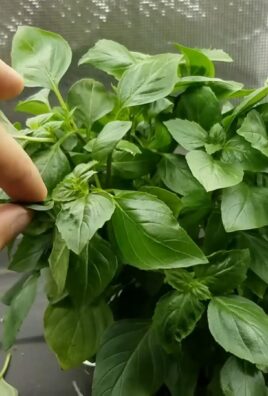
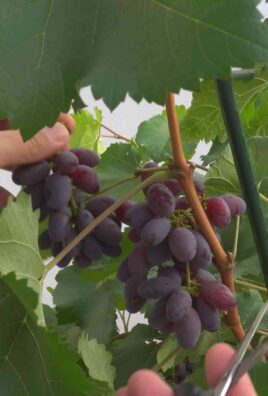
Leave a Comment